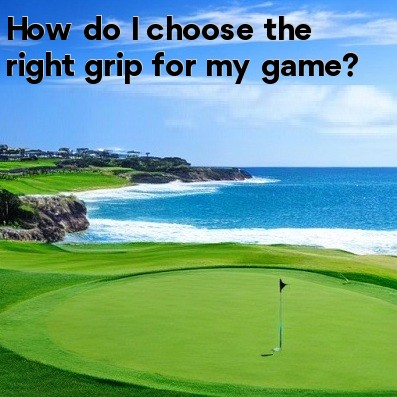
Choosing the Right Grip for Your Golf Game
When it comes to improving your golf game, one crucial factor to consider is the grip. A proper grip not only enhances your control over the club but also influences the accuracy and consistency of your shots. So, let's dive into the different types of golf grips and how to choose the right one for your game.
- Overlapping Grip: Also known as the Vardon grip, the overlapping grip is the most common grip used by golfers. It involves overlapping the pinky finger of the trailing hand (right hand for right-handed players) over the index finger of the lead hand, creating a unified grip. This grip offers stability and control, making it suitable for players with average-sized hands.
- Interlocking Grip: The interlocking grip is similar to the overlapping grip, except that the pinky finger of the trailing hand interlocks with the index finger of the lead hand. This grip is often preferred by players with smaller hands or weaker wrists, as it provides extra support and reduces the risk of the club slipping during the swing.
- Ten-Finger Grip: Also known as the baseball grip, the ten-finger grip involves gripping the club handle with all ten fingers in a manner similar to how you would hold a baseball bat. This grip is commonly used by beginners, individuals with hand strength issues, or those transitioning from other sports. While it offers increased control, it may limit wrist hinge and overall shot power.
Now that you are aware of the different grips, let's discuss how to choose the right one for your game:
- Hand Size and Strength: Consider the size and strength of your hands when selecting a grip. Players with larger hands may find the overlapping or interlocking grips more comfortable, while players with smaller hands may prefer the interlocking or ten-finger grip.
- Shot Shape: Assess your shot shape tendencies. If you tend to slice the ball, a stronger grip (rotating both hands slightly to the right for right-handed players) may help close the clubface at impact. Conversely, if you hook the ball excessively, a weaker grip (rotating both hands slightly to the left for right-handed players) could help open the clubface at impact and reduce the hook.
- Comfort: Ultimately, comfort is key. Experiment with different grips and pay attention to how they feel during your swing. The right grip should feel natural and allow you to maintain a relaxed but firm hold on the club throughout your swing.
Remember, consistently practicing with the chosen grip is essential to develop muscle memory and improve your overall game.
Whether you opt for the overlapping grip, interlocking grip, or ten-finger grip, the key is to choose the one that feels right for you. It may be beneficial to consult with a professional golf instructor who can analyze your swing and provide personalized recommendations.
When it comes to golf, every player is unique, and finding the right grip can significantly impact your performance on the course. So, take the time to experiment, seek guidance if needed, and enjoy the process of discovering your optimal grip for a more enjoyable and successful golf game!





